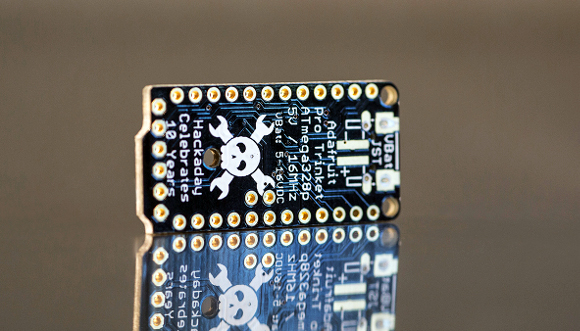It’s time to announce the winners of the Trinket Everyday Carry Contest! We’ve had a great 5 weeks watching the projects come together. A team of Hackaday staffers spent their weekend watching videos and selecting their top entries based on the contest rules. We had a really hard time picking the top three – the competition was tight, and there were quite a few awesome projects.
Without further ado, here are the winners!
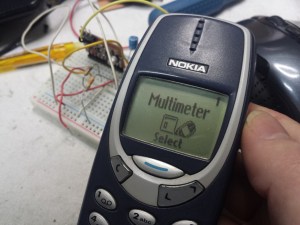 First Prize: 1337 3310 tool. [Mastro Gippo] really knocked this one out of the park. He built a swiss army knife of a tool out of the iconic Nokia 3310 candybar phone. 1337 3310 tool is a graphing voltage and current meter, an ohmmeter, a continuity tester that plays the original Nokia ringtone, and a gaming machine which can play Tetris. [Mastro Gippo] is 99% there with TV-B-Gone functionality as well. Amazingly, [Mastro Gippo] kept the Nokia look and feel in his user interface. He spent quite a bit of time grabbing data and bitmaps from the 3310’s original ROM. [Mastro Gippo] is getting a Rigol DS1054Z scope to help iron out the bugs in his future projects!
First Prize: 1337 3310 tool. [Mastro Gippo] really knocked this one out of the park. He built a swiss army knife of a tool out of the iconic Nokia 3310 candybar phone. 1337 3310 tool is a graphing voltage and current meter, an ohmmeter, a continuity tester that plays the original Nokia ringtone, and a gaming machine which can play Tetris. [Mastro Gippo] is 99% there with TV-B-Gone functionality as well. Amazingly, [Mastro Gippo] kept the Nokia look and feel in his user interface. He spent quite a bit of time grabbing data and bitmaps from the 3310’s original ROM. [Mastro Gippo] is getting a Rigol DS1054Z scope to help iron out the bugs in his future projects!
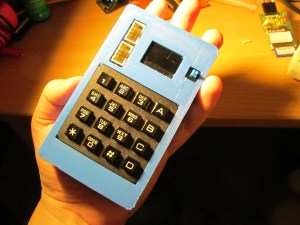 Second Prize: Pavapro – portable AVR programmer. [Jaromir] built an incredible pocket-sized microcontroller programming tool. Pavapro can read and edit text files, handle serial I/O at 9600 baud, and burn AVR microcontrollers. If that’s not enough, it can actually assemble AVR binaries from source. That’s right, [Jaromir] managed to fit an entire assembler on the Pro Trinket’s ATmega328 processor. Pavapro’s 16 button keypad won’t allow for much in the way of touch typing, but it does get the job done with T9 style text entry. The device is also extensible, we’re hoping [Jaromir] adds a few other architectures! PIC and MSP430 modes would be awesome! [Jaromir] will be receiving a Fluke 179 multimeter with a 6 piece industrial electronics tip kit! We’re sure he’ll put it to good use.
Second Prize: Pavapro – portable AVR programmer. [Jaromir] built an incredible pocket-sized microcontroller programming tool. Pavapro can read and edit text files, handle serial I/O at 9600 baud, and burn AVR microcontrollers. If that’s not enough, it can actually assemble AVR binaries from source. That’s right, [Jaromir] managed to fit an entire assembler on the Pro Trinket’s ATmega328 processor. Pavapro’s 16 button keypad won’t allow for much in the way of touch typing, but it does get the job done with T9 style text entry. The device is also extensible, we’re hoping [Jaromir] adds a few other architectures! PIC and MSP430 modes would be awesome! [Jaromir] will be receiving a Fluke 179 multimeter with a 6 piece industrial electronics tip kit! We’re sure he’ll put it to good use.
 Third Prize: Robotic 3rd Hand. Let’s face it. We can’t all be Tony Stark. But [Tim] gets us a little bit closer with his awesome wearable entry. Need a tool? Just press the button, and Robotic 3rd Hand will give you a … hand. [Tim’s] creation utilizes the Pro Trinket to drive a servo which moves an incredibly well designed and 3D printed mechanism that lifts a screwdriver off the wearer’s wrist and places it into their hand. [Tim] originally was going to go with Electromyography (EMG) sensors to drive the hand, however he switched to a simple button when they proved problematic. We absolutely think this was the right decision for the contest – it’s always better to have a simpler but working project rather than a complex yet unreliable one. That said, we’d love to see him circle back and give EMG another try! [Tim’s] next project will be soldered up with the help of a Hakko FX888D with a tip kit. If things get a bit wobbly, he can use his new Panavise 324 Electronic Work center to keep everything steady.
Third Prize: Robotic 3rd Hand. Let’s face it. We can’t all be Tony Stark. But [Tim] gets us a little bit closer with his awesome wearable entry. Need a tool? Just press the button, and Robotic 3rd Hand will give you a … hand. [Tim’s] creation utilizes the Pro Trinket to drive a servo which moves an incredibly well designed and 3D printed mechanism that lifts a screwdriver off the wearer’s wrist and places it into their hand. [Tim] originally was going to go with Electromyography (EMG) sensors to drive the hand, however he switched to a simple button when they proved problematic. We absolutely think this was the right decision for the contest – it’s always better to have a simpler but working project rather than a complex yet unreliable one. That said, we’d love to see him circle back and give EMG another try! [Tim’s] next project will be soldered up with the help of a Hakko FX888D with a tip kit. If things get a bit wobbly, he can use his new Panavise 324 Electronic Work center to keep everything steady.
If you didn’t make the top three in this contest, don’t give up! We’re going to be having quite a few contests this year. The top 50 entrants will receive custom Hackaday EDC Contest T-shirts. Check out the full list of 50 on Hackday.io!
 Perlin noise was created in the early 80s by Ken Perlin while he was working on the movie Tron. Frustrated by the current state of computer graphics and too limited on space to use images, he devised an algorithm for generating natural-looking textures. Basically, you generate a bunch of numbers between 0 and 1, then assign values to those numbers, such as a range of greyscale values from black (0) to white (1), or the values from the color wheel. The result is much prettier than random numbers because the neighboring values for any given number aren’t radically different. You get nice randomness with hardly any overhead.
Perlin noise was created in the early 80s by Ken Perlin while he was working on the movie Tron. Frustrated by the current state of computer graphics and too limited on space to use images, he devised an algorithm for generating natural-looking textures. Basically, you generate a bunch of numbers between 0 and 1, then assign values to those numbers, such as a range of greyscale values from black (0) to white (1), or the values from the color wheel. The result is much prettier than random numbers because the neighboring values for any given number aren’t radically different. You get nice randomness with hardly any overhead.

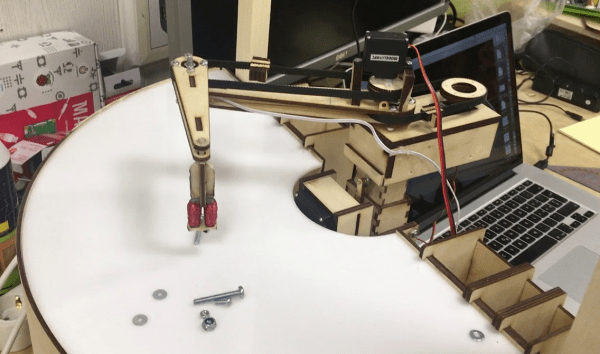

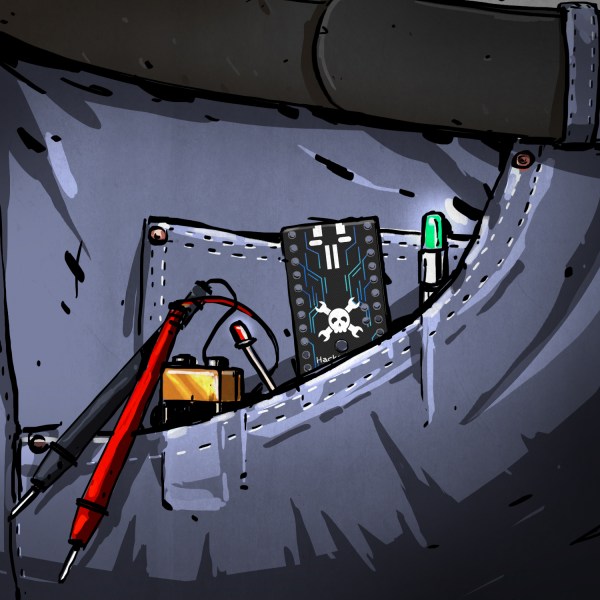
 First Prize:
First Prize:  Second Prize:
Second Prize:  Third Prize:
Third Prize:
 We know you all love to procrastinate with your entries, so we’re going to be offering a few perks to those who enter early and update often. Each week, we’ll throw all the entrants who have published at least one project log full of details into a drawing for a special prize from The Hackaday Store. To be considered you must officially submit your project which is accomplished through a drop-down list on the left side of your project page.
We know you all love to procrastinate with your entries, so we’re going to be offering a few perks to those who enter early and update often. Each week, we’ll throw all the entrants who have published at least one project log full of details into a drawing for a special prize from The Hackaday Store. To be considered you must officially submit your project which is accomplished through a drop-down list on the left side of your project page.